When I was little, my Grandpa always said his mother’s side of the family had Cherokee blood running through their veins. My great grandmother’s surname is Noah and many Noah family trees associate themselves with the Cherokee tribe. The family migrated to Patrick County, Virginia just prior to the Civil War but I could not find any links to the Cherokee in this time frame. I began looking further back and noticed many public family trees proclaiming a John Noah/Noe having a Cherokee bride, but no evidence to support this. John Noe is the son of Peter Noe (circa 1720-1789), the immigrant and after researching the footsteps of this family from the mid 18th century to present day, nothing has been found by way of proof to Cherokee lineage and the Noah family. I then began researching the White surname which was the mother of Mary Noah, my great grandmother, and still nothing that pertains to Native American genealogy. To add to my dilemma, my grandmother on my Mom’s side also proclaimed that her family was tied to the Cherokee tribe. This encouraged me to look into the Eaton, Cromer, Johnson, Jenkins and even more surnames. But, nothing has ever been located during the 18th or 19th centuries to link my family to the Cherokee or any other tribes of North Carolina, South Carolina, Georgia, Indiana, Kentucky, Tennessee or Virginia.

My main objective with this article is to share with you all why researching Native Americans before 1800 is so difficult. I also want to express to everyone that family stories are just as important as names and dates when it relates to our family trees. But, as a family historian, I feel that we must separate the two between fact versus fiction and state this on our family trees. The stories that were told to me as a child are special memories for me now. They are part of who I am and what I share with all of you.
The Truth About Native American Genealogy
Getting back to my Grandpa’s story, he stated that his great grandfather was half Cherokee on his mother’s side. This would mean that Jordan Cain Noah (1821-1901) was the son of a Native American. Tracing the lineage, Jordan was the eldest son of Daniel and Sallie Noah. They lived in Orange County, North Carolina near present day Haw River. Although Sallie’s surname is not known, there is no indication that she is a Native American. She dies during childbirth in 1831 and is buried in Orange County. Daniel then remarries in October of 1832 to Margaret Bayley. Margaret dies and Daniel marries for the last time during the year of 1866 to Auzilla May. Daniel lives his entire life in the Orange, Alamance County areas of North Carolina where he dies in 1881.
I then, turn my attention to going back even further to Daniel’s father, John Noe(circa 1765-1845). This John is born in the present day Orange County area of North Carolina and his father, John Noe is the individual who others proclaimed as marrying a Cherokee. But, as records surfaced, I discovered this John Noe born circa 1747 as marrying Catherine Efland in Virginia prior to migrating to North Carolina. This John is the son of Peter Noe who is the actual immigrant who arrived to the colonies and migrated with his son to the area after 1760. Nothing in relations to Native American lineage in any form. Although, I’ve not found every detail on this particular family, there is nothing in the paper trail to suggest to me that Native American genealogy is associated with the Noah family. When going through these records, I came across hundreds of public family trees that proclaim Cherokee lineage or Siouan lineage or various other tribes and nations. All of these trees proclaim the lineage but offer very little or no evidence to support this. Where is the proof? Why is it so difficult to prove Native American lineage?

Several reasons come quickly to mind with this. We all wrestle with the idea that our family stories are true. So we begin our search with what we “think” we know instead of concentrating on the facts only. It’s so important to separate these stories and determine what has been proven and what has not. Then, you determine the timeline of your research. If you are searching after 1800, you stand a better chance on acquiring some type of records pertaining to your Native American genealogy. Also, research on a ground level as much as you can in order to understand what if any tribes were living in or near the area of your research. The most important factor is to separate the fact from the fiction and research each small piece of your story thoroughly. If you are researching during the 17th and 18th centuries for your Native American genealogy, you have an entire different world to conduct your research.
It is a known fact that the Native Americans did not record materials in a written format until 1821 when Sequoyah created the Cherokee written word. So what records exist prior to 1821 for the Cherokee? They vary greatly between the states, colonies, etc. Depending a great deal on the exact time frame of your research, various documents can be located concerning the early Native Americans and their families. During the early 18th century, explorers would travel throughout the colonies sharing their experiences by writing in their journals and diaries. They wrote of the people, places, villages, names, chiefs and much more. You can find these specific journals filled with one objective in mind; to create a communication relationship, to entice trade and to maintain peace with the Native Americans. Each and every colony maintained relations with the Native Americans by way of trade guidelines, treaties and other documents. These are valuable tools to use with your research and may guide you to amazing discoveries.
Also, keep in mind the religious missionary groups who frequently traveled to various tribes all throughout the colonies and later into the western territories. These groups also recorded daily journals, diaries and more which have been preserved for our use. Their main goal was set to share their religious practices and beliefs by encouraging new habits to emerge among the tribe members. The Native Americans were indeed beginning to change their traditions and customs by the mid 1700s. By the end of the century, many were using new marriage customs, adding surnames and establishing a self worth by way of inheritance and more. I urge you all to keep in mind the way these documents were recorded. This is second hand information that is available during this particular time period and this is due to the fact that Native Americans held no written word or documents of their own. In other words, these materials were first given to a person who decided to write it down using their words, their opinions, their details. You have to ask yourself, What was left out? What was added? What was missed?

Getting back to Grandpa and his story, I believe that he was reciting a story that was told to him as a child. His grandfather, Daniel Fox Noah may have recited the story in order to explain his middle name to his grandson. (Just a thought) Nevertheless, Grandpa recited the same story to his sons and shared it with me as well. Even though, I have yet to determine the original source of the story or why it was fabricated, if it was fabricated, the story is part of my family history. It doesn’t belong on the branch of the tree, but it does belong in the scenery. By the way, my grandmother’s version of her family and the Cherokee, will have to wait for now. I will make sure to share it with you all at a later time.
The journals I mentioned above are all a great read, both historically and for family relations. Needham & Arthur’s accounts dating to 1764 are a great resource. They are some of the earliest records through Virginia, the Carolinas and into parts of the western frontier. Sir Alexander Cuming and his journal is another great find as is the journal of John Lawson and his explorations into North & South Carolina during 1700. The Moravians are another great resource as they embarked from their first southern settlement in present day Georgia during 1747 and traveled back and forth along the Great Wagon Road during the 18th century.
Fact #1, yes there is very little paper trail that will associate your ancestor to Native American genealogy during the 18th century. Fact #2, yes, it can be achieved by using various different resources as given in the examples above. Fact #3, regardless if your family story is true or not, it matters! The story is part of you and your family and it offers a little spice and personality with your tree. I encourage everyone to separate the fact from the fiction in order to comprise the best of the best with your family research. Our Ancestor Left An Amazing Trail To Follow !! Enjoy Your Journey !!
Categories: Genealogy #OffTheGrid, North Carolina, Virginia



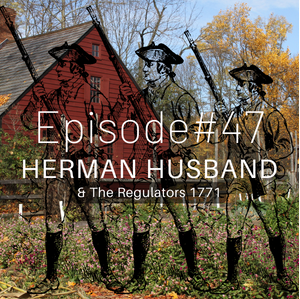
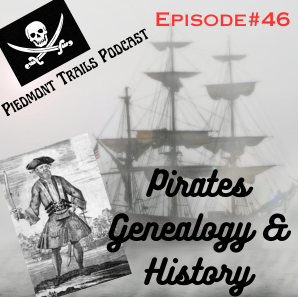
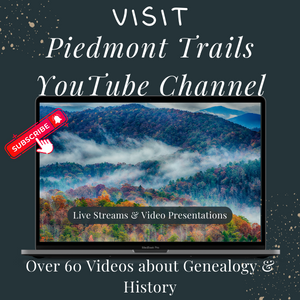


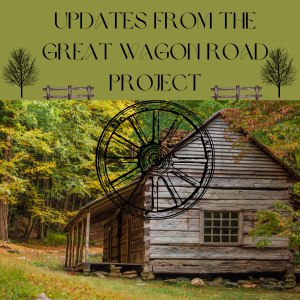

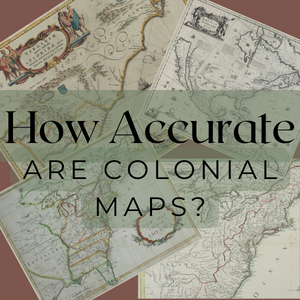
Ok,
The Truth About Native American Genealogy
You said:
Getting back to my Grandpa’s story, he stated that his great grandfather was half Cherokee on his mother’s side. This would mean that Jordan Cain Noah (1821-1901) was the son of a Native American
If this is true, then a DNA test should show that you are around 5-8 percent
Native American. The only way most of us can prove our Indian Ancestry is through
DNA testing. My family was rumored to be part Cherokee for multiple generations.
The only way I could prove it was to have my DNA tested at CRIGenetics.com.
My results are 3.4 percent American Indian. There was no written paper trail at all to help me.
Ray
LikeLiked by 2 people
Yes, Ernest I agree with you 100%. I only wished that the paper trail was not as difficult as it appears to be especially for the 18th century time period. Congratulations on your findings !!!
LikeLiked by 1 person
I too had family stories of Cherokee blood in my mother’s ancestral line. I eve had a few photographs of family members whereby one might swear that the individual had Native American DNA. Even knew who and approximate dates of the heritage. Have spoken with relatives of the same line and they too have the stories of Native American ancestry. However, DNA shows no Native American markers.
We’re talking about Rockingham and Orange County (now Alamance). The surname of the family was Strickland. I know that that surname is common with the Lumbee’s and Waccamaw-Siouan tribes of eastern NC. Thought that perhaps that the family might have connection with these mixed race tribal groups. Still looking as I can not trace the Strickland further back than 1810.
Sam Post
LikeLiked by 2 people
Samuel, I wish you great success on your research and please keep me posted on your findings. I have my McBride line from that area in Rockingham county that stated Lumbee relations. I have yet to prove this as well. Don’t give up and stay the course !!
LikeLiked by 1 person
Carol,
I participated in the Genographic Project run by the National Geographic Society.
My DNA results show my relatives going back as far as recorded history based
on DNA matches including Pharaohs in Egypt, King Tut etc and Genghis Khan in Asia. I am 98.7 percent Homo Sapien and 1.3 percent Neanderthal.
Those of us who had ancestors that left Africa are between 1 and 5 percent Neanderthal.
Some folks in Asia are part Denisovan. Though the older two species are now gone the DNA tests show that our “Homo Sapien ancestors made love not war” often when they met
the two older species in Europe and Asia. This is from a statement from the Geographic
Society.
Considering that the oldest written recorded history only goes back 5,000 years or so and
that many of our ancestors even in the 18-19 century could not read and write we have lots of gaps in our ancestor knowledge. My Neandertal DNA goes back 600,000 years or so. The Bible History oral and written only goes back 6,000 years or so.
Regards,
Ernest Ray
LikeLiked by 2 people
I am most interested in the Pharaoh of Egypt lineage. I have studied Egyptian history for many years. I have heard of the project but you are the first to share with me the actual results. I appreciate you sharing this.
LikeLiked by 1 person
Carol,
I am also related to Ramses II and Ramses the Great 1303-1213 BC, Martin Luther, Napoleon, Richard II, Marie Antoinette, Benjamin Franklin, Nicolas Copernicus, Queen
Victoria, Petrarch, Abraham Lincoln, Jesse James, Sir Frances Drake, Charles Darwin.
Some of these matches go back 45,000 – 65,000 years and some are multiple matches
both paternal and maternal.
My paper trail matches go back multiple times to Charlemagne through my English, Spanish and German Ancestors. If you are related to Charlemagne you are related to most modern Royal Lines in Europe.
Genealogy never ends, it just gets more complicated.
Ray
LikeLiked by 2 people
My dad always claimed that his maternal grandmother had Indian blood, but my research, and DNA testing has proven otherwise. It seems that it was fashionable generations ago to claim Native-American ancestry. “Grandma had high cheek bones.”, was the only real link that Daddy could offer.
LikeLiked by 1 person
I agree with you Carolina Vann and I’ve heard that expression as well with the “high cheek bones.
LikeLiked by 1 person
Carol,
A DNA match does not show your lineage to a person, just a match to someone’s DNA.
Regards,
Ray
LikeLiked by 2 people
Carol,
For those trying to research their American Indian ancestry using DNA.
Here are two of my maternal matches through my mother, an example of what you can find.
Eva Longoria b. 1975 a Hispanic American Actress.
Momia Juanita b. C. 1450 a Peruvian Indian who was sacrificed and buried as a mummy,
her remains were well preserved by snow and ice on a mountain and provided good DNA
test material. She was found in 1995.
LikeLiked by 2 people
Ernest, Thank You so much for sharing this data with us. I greatly appreciate it.
LikeLiked by 1 person
///////////////wow
LikeLike
Thank you for your post. My mother often said that our family had Cherokee blood. I wondered, and did the Ancestry DNA test, and not one drop of Native American is shown in my blood. LOL.
LikeLiked by 2 people
Happened to me as well.
LikeLike